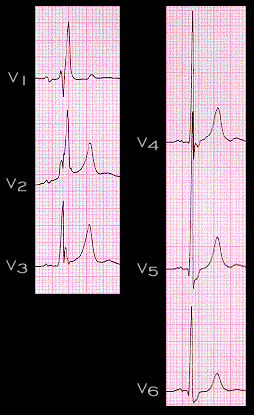
The chest leads are shown here. Note the tall R waves in leads V4, V5, and V6. Their amplitude is above normal limits for the patient’s age and indicates left ventricular hypertrophy, a result of the long-standing hypertension. The broad R’ in leads V1and V2 and the broad S wave in leads V5 and V6 reflect the unopposed rightward and anteriorly directed right ventricular forces exposed by the development of right bundle branch block
